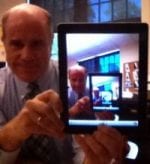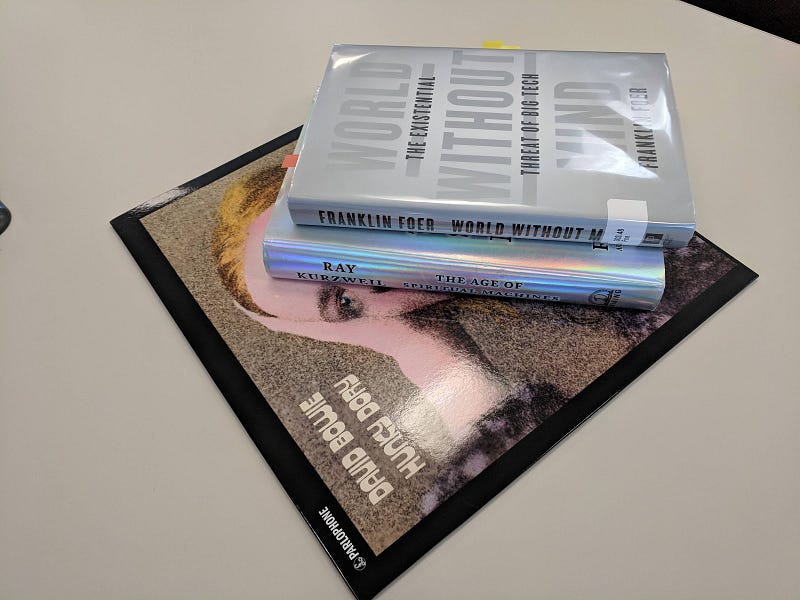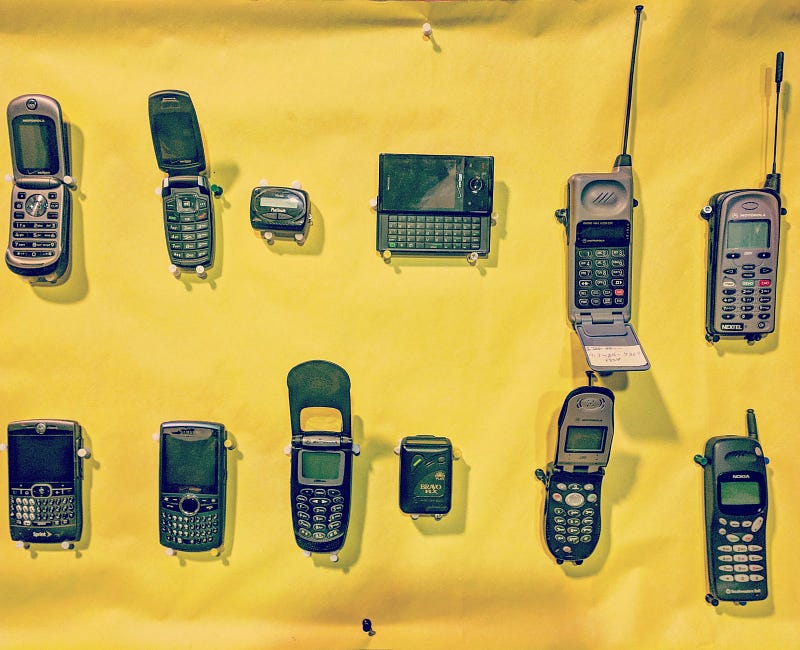Each fall, I challenge the members of the current senior class to wrap their minds around the increasing rate of technological change by hauling into the chapel all the antiquated technology I have gathered in my lifetime — some of which I both implemented and decommissioned as a technician for Hackley School over 20-some odd years. I display the physical relics of the analog machine era and digital age forerunners.
I do this knowing that some in the audience will have never seen a phone with a dial, a slide projector, a pager or a black and white tube TV. The members of the class of 2019 were born at or around the turn of the 21st century — when the phones that are so central to their lives, and the services that support them, did not yet exist. As Franklin Foer describes in his book World Without Mind, the period of their birth around the year 2000 was one of “convergence” in which “with the Internet, all media came rushing down the same digital falls. The computer screen began to simultaneously take the place of the post office, the television set, the stereo, and the newspaper.” All the functions fulfilled by my chapel collection now live between their thumbs and in the palm of their hands.
Shockingly, I asked them to to leave their devices at the door and take a digital hiatus for twenty minutes. During our short time together, I asked the seniors to recognize the role of the their phone in their lives and the pace of technology change in their lifetime that brought on this “convergence.” I reminded the seniors that their life experience has made them uniquely ready for our ever-changing world. While recognizing that they were ending their Hackley learning experience, I implored them to never stop learning — as this skill will only become increasing more important as the rate of life change accelerates.
Futurist Ray Kurzweil, in his book The Age of Spiritual Machines, calls this rate of technological change the “Law of Accelerating Returns,” and he reflects on a unique human trait: “Humans are capable of innovation, which is the creation and retention of new skills and knowledge. Innovation is the driving force force in the Law of Accelerating Returns…So innovation turns [learning] into indefinite exponential expansion.” While I am often the first to scoff at the overuse the word “innovation” in education, I believe Kurzweil makes a salient point in tying innovation to human’s ability to adapt to change as well as driving the change itself. Because of this, our need to be open to continued learning is exponentially more important than ever before. As the writer Yuval Noah Harari recently noted in a blog post, “Humans as individuals and humankind as a whole will increasingly have to deal with things nobody ever encountered before…You will have to repeatedly let go of some of what you know best, and learn to feel at home with the unknown.”
This parallels one central question in education today; How do we, as teachers, stay open and interested in learning new things even if we do not know what those thing will be, let alone teach our students the same skill? Teachers largely choose their profession out of their love of learning and their hope to serve as role models of lifelong learning. However, change is hard for us too, and we are in the process of examining conventional models of learning, opening ourselves to new methods compatible with this time of accelerating change. In a pursuit of that goal, Hackley School has been engaged in strategic planning and, as part of that process, produced its Portrait of a Graduate document — an aspirational document that coalesces the skill set that will help students face a future of increasing change.
Early this fall, I was invited to speak to Upper School students about one of the Portrait’s aspirations that resonates with me — and it pushed me to think about the connection between curiosity’s relationship to lifelong learning and the importance of embracing change. The Portrait challenges students to “Explore the breadth of intellectual curiosity, stimulate their creativity and pursue meaningful questions.” Curiosity is that which keeps us forever engaged in learning. Not just the curiosity of casual observers, Internet lurkers and gossips, but “intellectual curiosity” — curiosity with the breadth that uncovers the “and” in Arts and Sciences as intersection, not juxtaposition. This is the curiosity that drives learning for the sake of learning, and curiosity as engagement of the mind through asking meaningful questions about the connections and conflicts between ideas, questions that stretch us beyond our siloed interests, and questions whose answers do not simply satiate curiosity but lead to more questions.
Pursuing our curiosity through meaningful questions leads to understanding, understanding leads to inspiration, and inspiration leads to innovation. Curiosity drives the accelerating, never ending change of Kurzweil’s law, and the innovation/learning cycle he describes.
As my parade of obsolete electronics ably demonstrates, change is inevitable — and it now comes at an increasingly exponential rate. We cannot expect our learned skills to simply transfer over to each new set of challenges. As futurist Alvin Toffler is reported to have said, “The illiterate of the 21st century will not be those who cannot read and write, but those who cannot learn, unlearn, and relearn.”
I have made a career of observing and adapting to new technologies, and in assisting others in accommodating that newness in their lives. I believe I would have had to rethink my vocation had I not remained a student myself. Having to gather my thoughts to speak to students on these occasions highlighted for me the reciprocal relationship that links change and curiosity. For me the key to this process is insatiable curiosity that supports forever learning in a time of forever change.
Originally posted: Turn and Face the Strange – Hackley Perspectives – Medium


